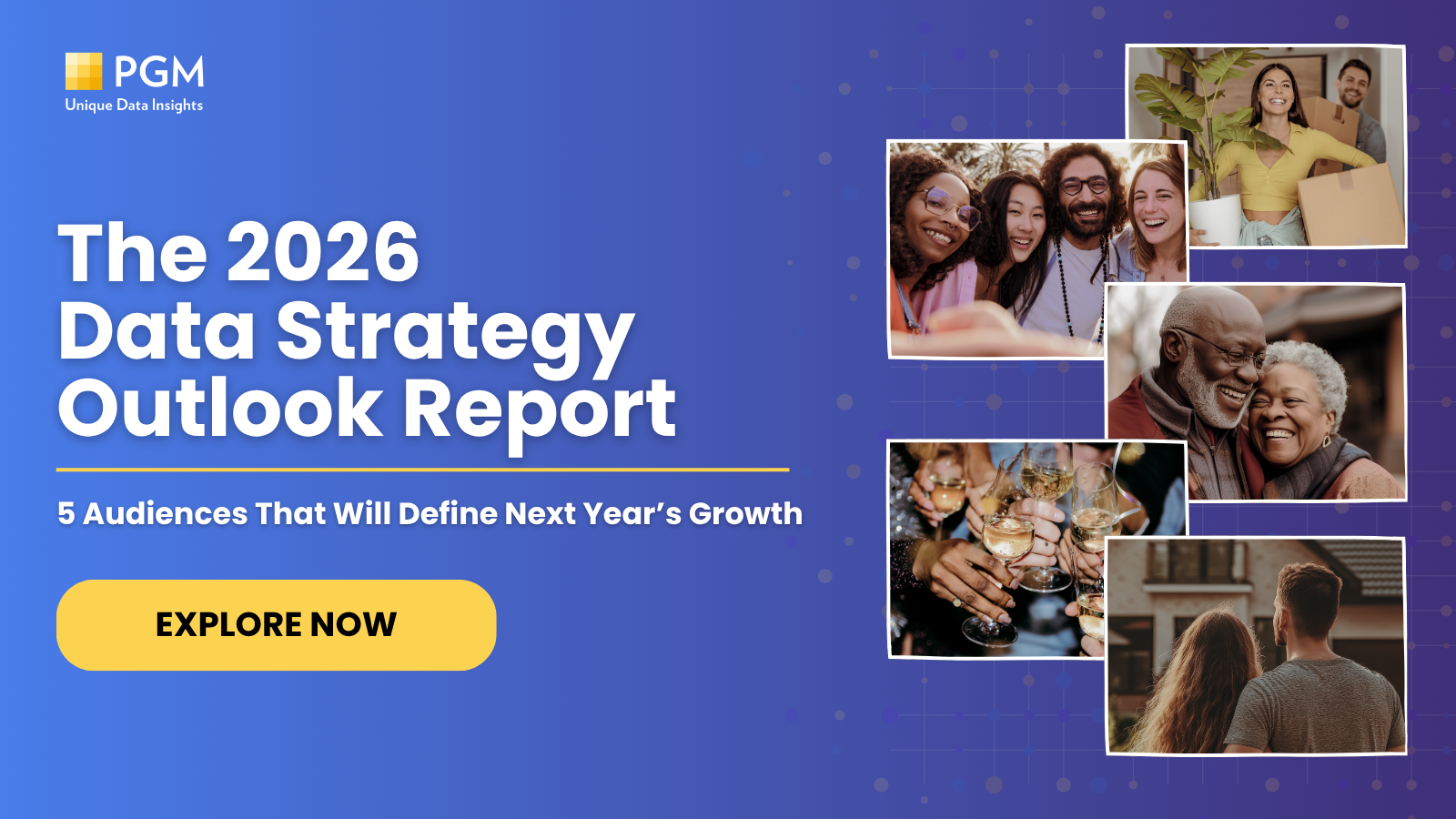Marketing & Audience Data Predictions 2026 – Who’s Really Spending Next Year?
Consumer behavior is shifting fast. Honestly, faster than most marketers (myself included) can fully keep up with.
And while U.S. spending is expected to slow in 2026 — growth down to 1.8% from 2.8% just two years earlier — that slowdown won’t land evenly.
Some groups will cut back, while others will keep spending, just in new ways.
The data makes it clear: 2026 won’t reward “more marketing.” It’s going to reward smarter, more human marketing.
The question you should be asking isn’t, “How do we reach everyone?” It’s “who’s worth reaching, and how do we show up in a way that feels relevant?“
At PGM Solutions, we’ve compiled key consumer trends and must-reach audiences in our 2026 Data Strategy Outlook Report.
Who’s Spending in 2026? Key Audiences to Watch

Movers remain the most predictable big spenders
Moving is still one of the strongest purchase triggers in the economy.
Even with affordability challenges, people are relocating. Remote work, life events, and downsizing are major moving triggers.
And when people move, they’re in-market for a variety of products and services.
For example:
- Movers drop nearly $17,000 on average setting up a new home (Realtor.com).
- Movers are seeking out everything from insurance and utilities to furniture, appliances, and local services.
- PGM data shows the “sweet spot” is a 6–8 week window before a move, when intent is at its peak.
The takeaway?
Timing and relevance matter more than ever. Show up late, and the decisions are already made.
Michelle Taves, VP and Group GM of Data and Marketing at PGM Solutions, shares, “Movers are setting up new homes, new routines, and new habits, all at once. Once the boxes are unpacked and routines are set, the decisions are locked in. In 2026, the brands that understand that timing is everything will come out ahead.”
Access Verified Mover Data Up to 14 Days Before It’s Available Through Other Sources
Gen Z and Millennials are shaping the culture and consumer demand
While Gen X still leads in overall consumer spend, younger cohorts are punching above their weight. As a result, Gen Z and Millennials are not only gaining spending power, they’re shifting how everyone else spends. Here are some noteworthy stats:
- Gen Z’s spending power is climbing fast and projected to hit $12 trillion by 2030.
- They outspend Boomers in wellness and lifestyle categories.
- Millennials are entering peak earning years and are about to benefit from the largest wealth transfer in history.
In addition to deals, they want experiences, values, and consistency across channels.
For example, if your “TikTok voice” doesn’t match your in-store vibe, they’ll notice!
“Millennials and Gen Z expect you to meet them where they are and care about what they want,” Todd Dziedzic, Head of Data Science at PGM Solutions, states. “In 2026, success will come from using data to understand what matters to these generations and how these factors influence their shopping behaviors.”
Minorstones are the new milestones
Not everyone’s waiting for weddings or retirements to celebrate. Smaller “minorstones” — finishing a project, landing a new job, paying off debt — are driving a wave of impulse, emotionally charged spending.
For example, 86% of Millennials report celebrating small wins, more than twice the rate of Baby Boomers. This generation also shows a higher awareness of their “small wins,” at 85%, compared to 64% of Baby Boomers.
It’s part of the “treat culture” that’s increasingly shaping the shopper mentality. While purchases might be smaller, they’re frequent and very personal. That’s an opportunity for you to position your product or service as the reward—the “treat” — that marks those wins.
“Movers, younger generations, early retirees, homeowners, and consumers celebrating small wins will drive some large spending in 2026,” Larisa Bedgood, Head of Marketing at PGM Solutions, adds. “Leaning into those signals and showing up with authenticity will help you win them over.”
Looking Ahead to 2026: The Opportunities for Your Data Strategy
As you can see, 2026 will be anything but “business as usual.” Your data strategy must adapt. Watch the trends, test new audiences, and prioritize in-market signals to stay ahead of your competition.
Download the 2026 Data Strategy Outlook Report to learn more about key consumer trends from PGM’s data to prepare your targeting strategies for the new year.





